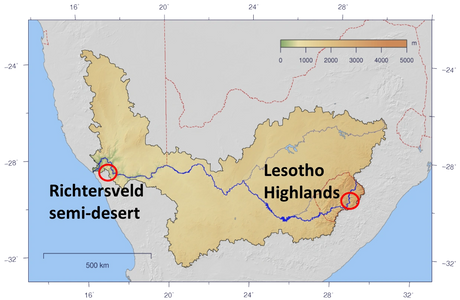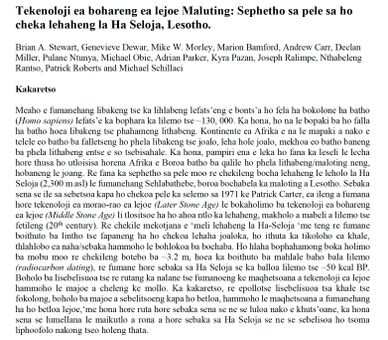Research Program
Goals of the AMEMSA Project
Goals of the AMEMSA Project

Our project is called AMEMSA or adaptations to marginal environments in the middle stone age, in a nutshell we are aiming to develop the archaeological and palaeoenvironmental records of challenging landscapes in later Pleistocene southern Africa.
Our Partners








Research Goals

AMEMSA
Our project is called project amemsa or adaptations to marginal environments in the middle stone age, in a nutshell we are aiming to develop the archaeological and palaeoenvironmental records of challenging landscapes in later Pleistocene southern Africa.
-
The data sets that we are producing serve as excellent counterpoints to the traditional hotbed of Later Pleistocene research of southern Africa located along the southwestern continental margin.
-
Our primary question is a relatively modest one and that is where, when and how and in which environmental conditions did modern humans develop pronounced adaptive flexibility.
-
We think that perhaps the best archaeological expression of this plasticity is inherently biogeographical with the best example being the widespread dispersals within Africa that eventually lead to the rapid colonization of the Old World and eventually the New.
-
Thus we are very interested in the processes of colonization, landscape learning, occupational pulsing and cultural innovation that accompanies human movements into areas that demand a high degree of flexibility. Southern Africa is an excellent place to conduct this research first because of the rich late Pleistocene arch record that is becoming increasingly well resolved in certain regions and secondly because the sub continent is extraordinarily diverse in terms of ecology with no shortage of marginal areas that were eventually colonized.

Orange-Senqu River
South Africa’s 2,798 km coastline hosted key developments in modern human evolution. During times of resource stress, the coasts acted as refugia to earlier members of our species by providing stable supplies. But the subcontinent has another major aquatic feature that, despite stretching 2200 km across virtually the entire country, has received far less attention: the Orange-Senqu River. Rising from the subcontinent’s highest peaks and coursing through some of its most arid regions, the Orange-Senqu would have oscillated with Late Pleistocene climate changes between a useful corridor and a vital lifeline. Our project targets opposite ends of this inland fluvial artery: highland Lesotho where its headwaters rise, and the Namaqualand desert where it empties into the Atlantic. In this paper, we employ radiometric, geoarchaeological and paleoenvironmental data to generate a hypothesis of how the Orange-Senqu River variably influenced Late Pleistocene population dynamics.

So far.....
•Reasons for initial colonization processes (MIS 5a) likely diverse mixture of push (aridification, demographic expansion) and pull (humidification, technological innovation) depending on region.
•MIS 4 too cold in the highlands until the end (HP) but the desert was exploited throughout.
•MIS 3 instability tempered in Lesotho highlands (vertical zonation & stable surface water?), but too demanding for sustained desert exploitation.
•Conversely, LGM instability tempered in Namaqualand, but too demanding for sustained highland exploitation. •Counter-intuitively, occupational pulses in the highlands and desert often match, but differ in intensity.
•Dynamics of the Orange-Senqu River heavily influenced human exploitation of both regions.
Select abstracts in English and Sesotho
All translations were conducted by Nthabeleng Rantso
Dewar et al. 2024

Dewar et al. 2024 Sesotho

Dewar et al. 2024 SAA's abstract

Stewart et al. 2024 SAA's abstract

Stewart et al. 2024 SAA's abstract Sesotho

Pazan, Stewart & Dewar 2023

Pazan, Stewart & Dewar 2023 Sesotho

Dewar, Mackay & Stewart 2023 in the Handbook of Pleistocene Archaeology of Africa








